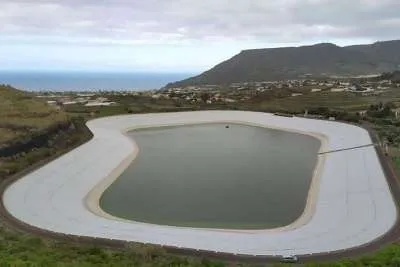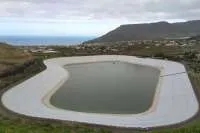The Canary Islands experienced the hottest April on record
- 08-05-2024
- National
- Canarian Weekly
- Photo Credit: Westend61
The Canary Islands witnessed an exceptionally warm April, with the average temperature hitting 19.2°C, marking a positive anomaly of +2.7 degrees for the time of year. This makes it officially classed as an “extremely warm” month, setting a record as the hottest April since 1961, when records began.
In terms of precipitation, the islands experienced a mere 4.2mm on average, which is only 27% of the expected value, making it a “remarkably dry” month in terms of rainfall, based on the reference period of 1991-2020, ranking it as the 12th driest April since 1961.
At the beginning of the month, the average temperature was close to the mean value of the reference period. However, the approach of a warm weather front from the southwest between the 2nd and 6th days of the month, led to a rise in temperatures.
Following this, temperatures dropped on the 6th, 7th, and 8th of the month, returning to values close to the norm for the time of year. The presence of a DANA (isolated high-level depression) west of the Canary Islands from the 9th onward, along with another DANA over North Africa, and the position of the African ridge axis over the archipelago, generated an eastward flow, causing a significant rise in temperatures from the 10th onwards, both due to advection and increased insolation caused by reduced cloud cover over the islands.
The most significant temperature increases occurred on the 11th and 12th, with the island's average temperature during those days reaching values close to 9 degrees above the usual for the time of year.
From the 19th of April onward, as a result of an anticyclonic episode with a predominantly northern flow, temperatures began to drop. The passage of a front, associated with a low-pressure system located over the Iberian Peninsula, lowered the average temperature to values below the reference period's average, where it remained until the end of the month.
Precipitation Levels:
Throughout the month of April, only three periods of precipitation were registered which are further contributing to the drought situation declared in the Canary Islands, with reservoir levels at worrying lows ahead of the summer season.
After a minor episode on the 1st day of the month, with weak and scattered showers due to trade wind accumulation clouds on the north-facing slopes of the most mountainous islands, the approach of a trough with an associated front, brought precipitation concentrated mainly on the island of Tenerife, as well as on the north and summit of Gran Canaria. This was weak to moderate precipitation, reaching moderate levels in a few isolated points.
Between the 20th and 22nd days, a trough approached the Canary Islands with a northwest-southeast axis, accompanied by a low-pressure system and surface front located northwest of the islands. This brought masses of air with higher moisture content and instability, resulting in some weak to very weak precipitation, both due to accumulation clouds on the north slopes and convective clouds inland and leeward.
On the 27th and 28th days, a less active front associated with a low-pressure system centred over the northwest extremity of the Iberian Peninsula passed over the archipelago, bringing weak to moderate precipitation, especially in the north of Tenerife.
During the 29th and 30th, an anticyclonic situation was restored, with a northern component flow and the passage of some fronts with higher moisture content, resulting in weak and scattered precipitation, mainly in the mid-altitude areas of the north-facing slopes of the most mountainous islands.



























































